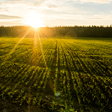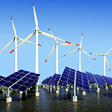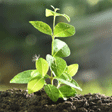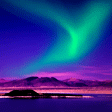- Home >
- Our Actions >
- Ambassador report
5
Comments
[Free Report] Save the Amaze : Amazon ! |
|---|
|
by Ananya Singh | 24-09-2019 01:13
|
|
As a young school student, my geography teacher used to talk at length about the Amazon Rainforest, as in how green it is, how dense it is, how much it rains there, the rich flora and fauna, the thick canopy, evergreen leaves, the wildlife - everything about the Amazon Rainforest sounds so fascinating. In english literature as well, a narrator once elaborated on his experience of boating in the Amazonian Rainforest. He talked about the stingray fishes and the swampy climate, the narrow, clear streams but muddy patches - a land endowed with almost all of nature's best gifts - the warm sunlight piercing through the heavily green patches of forest, the blue water, the colorful flowers and the echoing roars & hummings of diversified wildlife. The Amazon, the largest rainforest in the world spanning over about 5.7 million sq km (roughly half the size of the United States), is also known as “the lungs of the earth”. Studies show that nearly 20% of our oxygen requirement is catered to by the Amazon rainforest. In addition to this, it also restores an enormous amount of water into the atmosphere and absorbs carbon & greenhouse gases But now, the world’s true home to biodiversity, the Amazon is burning at a record rate - with images from space showing the smoke covering much of Brazil which makes it a perilous global tragedy. And this burning isn’t just fast but it’s also furious - the burnings have sustained for over a month. So, how did it all start ? Between January and the end of July (2019), data from Brazil’s National Institute for Space Research (INPE) shows almost 16,000 active fire hot spots had been detected within the Amazon biome. Just one month later, that figure had almost tripled to more than 46,000 fires. The fire season was so-far the worst in almost a decade. But no counter measures were taken. The fire gathered further momentum and the smoke started pouring into the atmosphere. By the end of July, the smoke had spread through the south to the west coast of Brazil’s Atlantic coastline. Then at 3pm on August 19, 2019, the plume mixed with thick clouds over Sao Paulo, turning day into night and drawing global attention to the fires burning in the Amazon. It sparked outrage because fire is not a natural part of the Amazon’s ecosystem. Carlos Nobre, from the University of Sao Paulo, said the cause was poor farming practices. According to him, “Tropical agriculture never ceases to light fires". Many of the fires that were detected in the Amazon in August were lit by farmers because fire is often used to burn through newly felled forests that have been cleared to make way for pastures - this primitive technique is known as “slash and burn”. The pastures are then allowed to grow for a few years, before being burned again to boost the nutrients in the soil. This is why fires and deforestation are intertwined in the Amazon. It’s a relationship that’s clearly visible in satellite data. It is winter in the southern hemisphere now and “the dry season creates favourable conditions for the use and spread of fire, but starting a fire is the work of humans, either deliberately or by accident,” INPE research Alberto Setzer told Reuters. Yadvinder Malhi, Professor of Ecosystem Science at the University of Oxford said - "The humid forests of the Amazon have no adaptation to fire and suffer immense damage. Almost all fires in humid forests are started by people". He believes the driving force behind the fire is human rather than natural. While statistics show that 2016 also saw a significant number of fires in the Amazon, this was considered a "drought year"- when there is naturally less rain so the forest is drier and therefore more fire-prone. But 2019 has not been a drought year. Professor Malhi says there is such a large number of fires because people have lit them. According to Professor Malhi, the forest takes around 20-40 years if it's allowed to regenerate. But any fires that are currently burning will leave the surviving trees more vulnerable to drought and repeated fires. It’s a vicious circle as fire after fire, as well as other farming activities, damage surrounding forests, making them more prone to future fires. The cycle has alarmed some scientists who fear the rainforest is being pushed closer toward a tipping point they call the “dieback scenario”, where the forests enter an irreversible cycle of collapse. So, what might ensue next ? Right now, there are more than 2,500 active fires in the Amazon Rainforest. As the number of fires increases, the emission of greenhouse gases will increase too. This will lead to an increase in our planet's overall temperature (mind you, we're already struggling to keep the mercury from rising 1.5°C further). As the climate will worsen, extreme heat and dry events like drought will become more rampant. Deforestation will bring in significant changes in the rainfall patterns, extending the length of the dry season, further affecting human health, agriculture and biodiversity. There's likely to be gigantic disruption in the ecosystem which will ultimately wreak havoc on this planet. Truth be told, this is only going to get worse, if not taken seriously and acted upon immediately. So, what’s being done to mitigate the crisis ? France's President Emmanuel Macron even threatened to scrap a huge trade deal between the European Union and South America as a result. The Brazilian Government has called in the armed forces, who have more resources to tackle the fires, including the use of helicopters and aeroplanes to drop water. Bolivia President Evo Morales contracted a Boeing 747 "Supertanker" last week to help extinguish the fires, Telesur reported. The Supertanker is capable of flying with 115,000 liters (over 30,000 gallons). But none of this is enough because we are in September 2019 now - it's almost been over a month after the news after the Amazon Fire broke out but nothing particularly prominent or promising has been done to assuage the raging fire. If we continue with this pattern of climate negligence and environmental disalarm, that day won't be too far when death will come knocking on our doors. So, what should be done to prevent such incidences in the future ?
I really hope that the people who have repeatedly ignored the climate's alarming signs take notice of our planet's decelerating health and treat this as an international emergency. |

|
|
|










 Previous : [Monthly Report] Make "Action ...
Previous : [Monthly Report] Make "Action ...









5 Comments
Hello Ananya
I do hope that you are fine and doing great with your works.
Thank you for your report about Save the Amaze : Amazon !
Green Cheers from Nepal :)
Keep writing great reports.
We are eager to read more reports from you.
Regards,
Kushal Naharki
Posted 04-10-2019 18:35
Thank you for the great article.
Keep writing and shining
Posted 03-10-2019 15:28
Hi Ananya!
As many people should be aware of the benefits humans get from the Amazon forest and the tragedy they will face when it is gone.
I??m surprised by the number of active fires in the Amazon rainforest and by it??s massive size in the picture.
Poor farming practices in South American should be replaced by the more effective and eco-friendly ways.
Thank you for the informative report!
Posted 28-09-2019 10:47
Hello!!
Great report.
You seems to be quite enthusiastic towards geography and your words towards Amazon is great.
Keep writing and shining.
Warm regards,
Meena Pandey
Posted 24-09-2019 13:25
Hey Ananya,
it's Lisa again:)
I am very amazed by how you deliver your thoughts and opinions on this issue very professionally!
I think you are a talented storyteller and a great writer.
I love how you have this flow in your writing and I really like that it's being shown by the questions you throw in your article.
For Amazon, it is a global tragedy that we should all care to solve it.
And yes, I definitely agree with you that we need an organized and institutionalized group of professionals and experts from all over the world to deal with unexpected climate crisis immediately at the break of the event. It would be an asset to the entire humanity if we could prevent the problem from growing and even preventing in every possible way.
And I do feel like that since some of the ambassadors are interested in pursuing their future career in the very field, a 'green army' will be strong and powerful:)!!
Thanks for awesome work.
I really enjoy reading your article and it makes me look forward to what you've got to show us next!
Green Cheers for you!!
Posted 24-09-2019 13:22